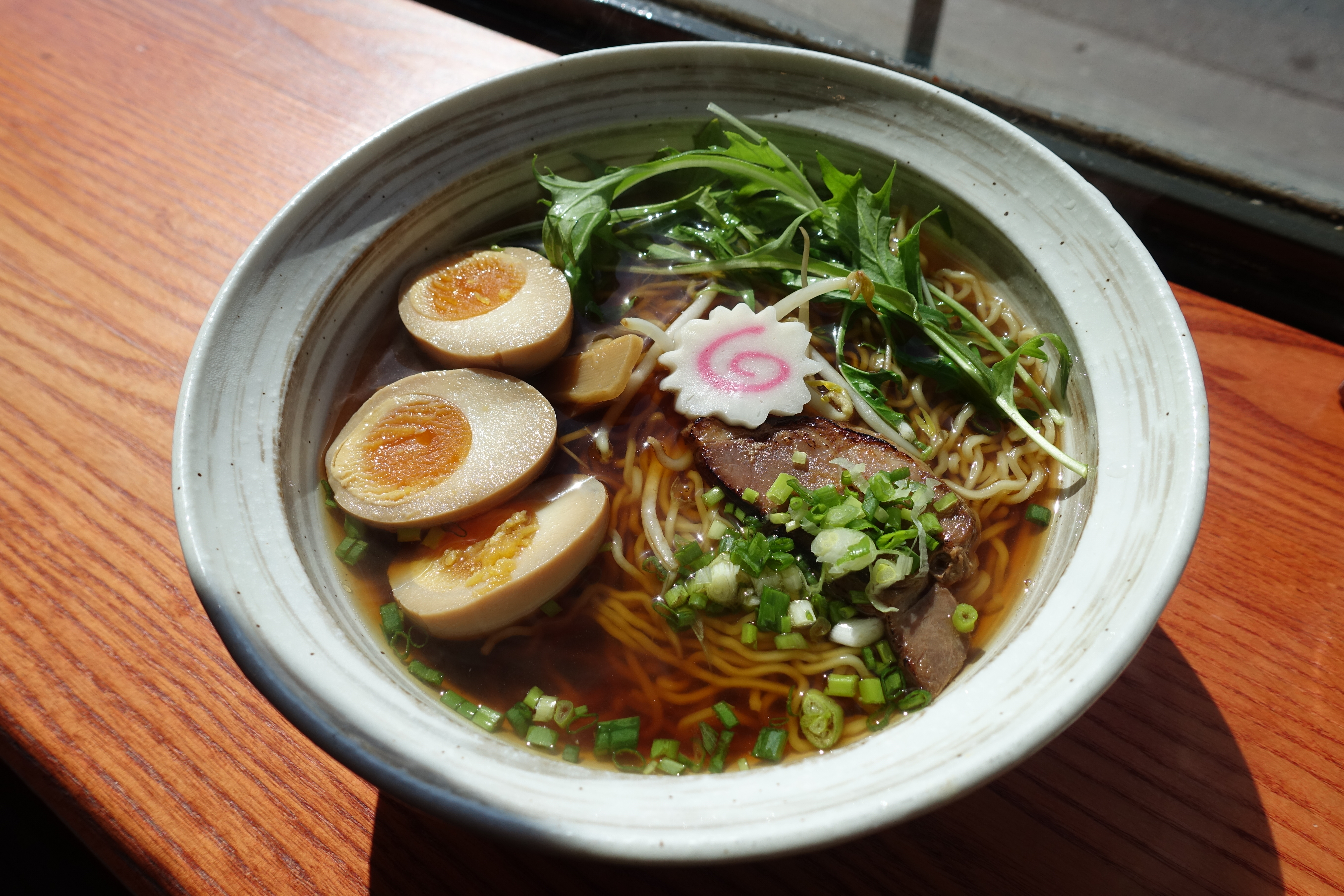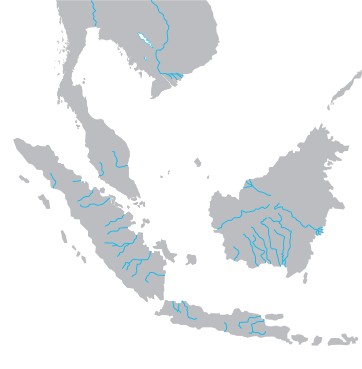|
Mee Siput
Mee siput muar ( Jawi: ), or simply mee siput, is a cracker which originated from and is commonly available in Muar, Johor, Malaysia. Mee siput muar is traditionally and originally hand-made of flour dough which is rolled, stretched into long noodle-like strips or strings before being swirled in a circular spiral pattern to resemble the shell of a , or snail in Malay. They are dried in the sun before being deep-fried in cooking oil until crispy and crunchy. The ready-to-eat snack may be served with condiments like sambal, chili paste or chili soya sauce. Beside its spiral snail-shell shape which has contributed to the name of mee siput, the so-called ''snail noodle'' cracker also has a crispy texture similar to the light, brittle feeling of a snail shell once it breaks in the mouth. In present times, the factory and machinery produced mostly were not made in the traditional "snail shell" form, but rather in a randomly swirled pattern due to mass production for durability, ... [...More Info...] [...Related Items...] OR: [Wikipedia] [Google] [Baidu] |
Sambal
Sambal is an Indonesian chili sauce or paste, typically made from a mixture of chillis with secondary ingredients such as shrimp paste (terasi), garlic, ginger, shallot, scallion, palm sugar, and lime juice. ''Sambal'' is an Indonesian loanword of Javanese origin ( ). In addition to Indonesian cuisine, sambal is also an integral part of the cuisines of Singapore, Malaysia, Brunei, and Sri Lanka. It has also spread through overseas Indonesian populations to the Netherlands and Suriname. (Indonesian) Different sambal recipes are served as hot and spicy condiments for dishes, such as '' lalab'' (raw vegetables), '' ikan bakar'' (grilled fish), '' ikan goreng'' (fried fish), '' ayam goreng'' (fried chicken), '' ayam penyet'' (smashed chicken), '' iga penyet'' (ribs), and various '' soto'' soups. There are at least 212 variants of sambal in Indonesia, most of which originate in Java. History Sambal is often described as a hot and spicy Indonesian relish. However, its m ... [...More Info...] [...Related Items...] OR: [Wikipedia] [Google] [Baidu] |
Snack
A snack is a small portion of Human food, food generally Eating, eaten between meals. Snacks come in a variety of forms including Food packaging, packaged snack foods and other processed foods, as well as items made from fresh ingredients at home. Traditionally, snacks are prepared from a number of ingredients commonly available at home without a great deal of preparation. Often Lunch meat, cold cuts, fruits, leftovers, Nut (fruit), nuts, sandwiches, and Candy, sweets are used as snacks. With the spread of convenience stores, packaged snack foods became a significantly profitable business. Snack foods are typically designed to be portable, quick, and satisfying. Food processing, Processed snack foods, as one form of convenience food, are designed to be less perishable, more durable, and more portable than prepared foods. They often contain substantial amounts of Sugar substitute, sweeteners, preservatives, and appealing ingredients such as chocolate, peanuts, and specially d ... [...More Info...] [...Related Items...] OR: [Wikipedia] [Google] [Baidu] |
Malaysian Noodle Dishes
Malaysian may refer to: * Something from or related to Malaysia, a country in Southeast Asia * Malaysian Malay, a dialect of Malay language spoken mainly in Malaysia * Malaysians, people who are identified with the country of Malaysia regardless of their ethnicities. Most Malaysians are of Malay, Chinese and Indian descent. ** Malaysian diaspora, Malaysian emigrants and their descendants around the world * Malaysian cuisine, the food and food culture of Malaysia * Malaysian culture, culture associated with Malaysia * The call sign and colloquial name of Malaysia Airlines See also * Malaysian names, names as used by the Malaysian people * * * Malays (other) * Malaya (other) * Malay (other) Malay may refer to: Languages * Malay language or Bahasa Melayu, a major Austronesian language spoken in Indonesia, Malaysia, Brunei and Singapore ** History of the Malay language, the Malay language from the 4th to the 14th century ** Indones ... {{disambiguati ... [...More Info...] [...Related Items...] OR: [Wikipedia] [Google] [Baidu] |
Sachima
Sachima ( zh, t=, p=Shāqímǎ) is a sweet snack in Chinese cuisine made of fluffy strands of fried batter bound together with a stiff sugar syrup. It originated in Manchuria and is now popular throughout China. It can also be found in Taiwan as well as overseas Chinese diasporas, most notably Malaysia and Singapore. Its decoration and flavor vary in different regional Chinese cuisines, but the appearance of all versions is essentially the same, somewhat similar to that of American Rice Krispies Treats. Regional variations Manchu Originally, in Manchu cuisine ''sachima'' is a sweet snack. It mainly consists of flour, butter, and rock sugar. It is now popular in mainland China among children and adults. Cantonese The Cantonese pastry version of ''sachima'' is slightly sweet. It is also made of essentially the same ingredients as the other varieties of ''sachima''. It is often sprinkled with sesame seeds, raisins or dried coconut. The Cantonese variety of ''sachima'' ranges ... [...More Info...] [...Related Items...] OR: [Wikipedia] [Google] [Baidu] |
Çäkçäk
Chak-chak () is a popular fried dough food in Tatarstan, Bashkortostan, Tajikistan, Uzbekistan, Kazakhstan, Kyrgyzstan and other parts of Central Asia. Chak-chak is made from unleavened dough cut and rolled into hazelnut-sized balls, which are then deep-fried in oil. Optionally, hazelnuts or dried fruit (e.g. apricots and raisins) are added to the mixture. The fried balls are stacked in a mound in a special mold and drenched with hot honey. After cooling and hardening, chak-chak may optionally be decorated with hazelnuts and dried fruits. Traditional wedding chak-chak is larger and is often covered with candies and dragées. The biggest chak-chak weighed and was prepared on 14 June 2018 during start of the 2018 FIFA World Cup in Kazan. Types *If the dough is fried as noodles, chak-chak is called boxara käläwäse (, , i.e. ''bukharan käläwä''). * Kazakh shek-shek is similar to ''boxara käläwäse''. * Uzbek chakchak comes as half rounded balls, noodles, and flakes. * ... [...More Info...] [...Related Items...] OR: [Wikipedia] [Google] [Baidu] |
Funnel Cake
Funnel cake ( Pennsylvania German: ''Drechderkuche'') is a regional sweet food popular in North America, found mainly at carnivals and amusement parks. It is made by deep-frying batter. History The concept of the funnel cake dates back to the early medieval Persian and Arab world as '' zalabiyeh'', where similar yeast-risen dishes were first prepared, and later spread to Europe. Pennsylvania Dutch immigrants brought the yeast dish, known as ''drechderkuche'', to America, and around 1879, they developed the baking powder version along with its new name, funnel cake. Preparation Funnel cakes are made by pouring batter into hot cooking oil in a circular pattern and deep frying the overlapping mass until golden-brown. The batter is commonly poured through a funnel, creating its texture and giving it its name. When made at concession stands, a pitcher with an integral funnel spout is employed. Alton Brown recommends they be made with choux pastry, which expands from steam produced ... [...More Info...] [...Related Items...] OR: [Wikipedia] [Google] [Baidu] |
Malaysian Cuisine
Malaysian cuisine (Malay language, Malay: ''Masakan Malaysia''; Jawi script, Jawi: ) consists of cooking traditions and practices found in Malaysia, and reflects the multi-ethnic makeup of its population. The vast majority of Malaysia's population can roughly be divided among three major ethnic groups: Ethnic Malays, Malays, Chinese Malaysian, Chinese and Indian Malaysian, Indians. The remainder consists of the Dayak people, indigenous peoples of Sabah and Sarawak in East Malaysia, the Orang Asli of Peninsular Malaysia, the Peranakan and Eurasian creole communities, as well as a significant number of foreign workers and expatriates. As a result of historical migrations, colonisation by foreign powers, and its geographical position within its wider home region, Malaysia's culinary style in the present day is primarily a melange of traditions from its Malay, Chinese, Indian, Indonesian cuisine, Indonesian, Thai, Filipino cuisine, Filipino and indigenous Bornean and Orang Asli, w ... [...More Info...] [...Related Items...] OR: [Wikipedia] [Google] [Baidu] |
List Of Malaysian Dishes
This is a list of dishes found in Malaysian cuisine. Staple foods Main dishes Soups Breads Salads Noodle dishes Rice dishes Snacks Preserved meat Desserts Spreads Condiments and sauces Cakes and pastries Drinks See also * Malaysian cuisine Malaysian cuisine (Malay language, Malay: ''Masakan Malaysia''; Jawi script, Jawi: ) consists of cooking traditions and practices found in Malaysia, and reflects the multi-ethnic makeup of its population. The vast majority of Malaysia's popul ... References External links {{DEFAULTSORT:Malaysian dishes * Dishes Cuisine-related lists ... [...More Info...] [...Related Items...] OR: [Wikipedia] [Google] [Baidu] |
Soy Sauce
Soy sauce (sometimes called soya sauce in British English) is a liquid condiment of China, Chinese origin, traditionally made from a fermentation (food), fermented paste of soybeans, roasted cereal, grain, brine, and ''Aspergillus oryzae'' or ''Aspergillus sojae'' Mold (fungus), molds. It is recognized for its saltiness and pronounced umami taste. Soy sauce was created in its current form about 2,200 years ago during the Western Han dynasty of ancient China. Since then, it has become an important ingredient in List of Asian cuisines, East and Cuisine of Southeast Asia, Southeast Asian cooking as well as a condiment worldwide. Use and storage Soy sauce can be added directly to food, and is used as a dip or Salt#Edible salt, salt flavor in cooking. It is often eaten with rice, Japanese noodles, noodles, and sushi or sashimi, or can also be mixed with ground wasabi for dipping. Bottles of soy sauce for the salty seasoning of various foods are common on restaurant tables in many co ... [...More Info...] [...Related Items...] OR: [Wikipedia] [Google] [Baidu] |
Chili Sauce And Paste
Chili sauce and chili paste are condiments prepared with chili peppers. Chili sauce may be Scoville scale, hot, Sweetness, sweet or a combination thereof, and may differ from hot sauce in that many sweet or mild varieties exist, which is typically lacking in hot sauces. Several varieties of chili sauce include Sucrose, sugar in their preparation, such as the Thai sweet chili sauce and Filipino ''agre dulce'', which adds sweetness to their flavor profile.'' Handbook of Vegetable Preservation and Processing'' pp. 162–164.''The Asian Grocery Store Demystified'', Linda Bladholm pp. 58–61 ... [...More Info...] [...Related Items...] OR: [Wikipedia] [Google] [Baidu] |
Malay Language
Malay ( , ; , Jawi alphabet, Jawi: ) is an Austronesian languages, Austronesian language spoken primarily by Malays (ethnic group), Malays in several islands of Maritime Southeast Asia and the Malay Peninsula on the mainland Asia. The language is an official language of Brunei, Malaysia, and Singapore. Indonesian language, Indonesian, a standardized variety of Malay, is the official language of Indonesia and one of the working languages of East Timor. Malay is also spoken as a regional language of Malays (ethnic group), ethnic Malays in Indonesia and the Thai Malays, southern part of Thailand. Altogether, it is spoken by 60 million people across Maritime Southeast Asia. The language is pluricentric and a ISO 639 macrolanguage, macrolanguage, i.e., a group of Mutual intelligibility, mutually intelligible speech varieties, or dialect continuum, that have no traditional name in common, and which may be considered distinct languages by their speakers. Several varieties of it ar ... [...More Info...] [...Related Items...] OR: [Wikipedia] [Google] [Baidu] |







